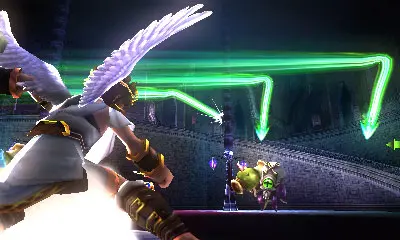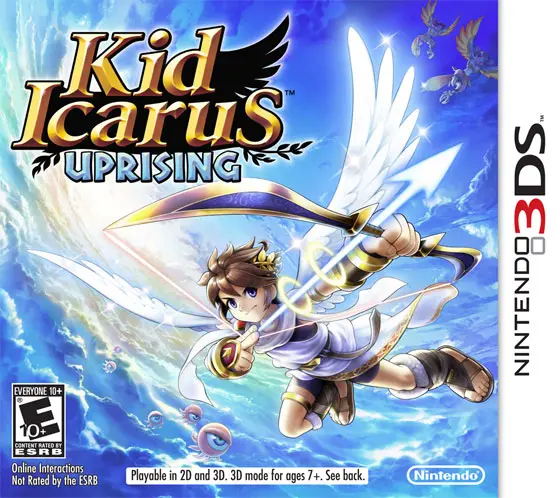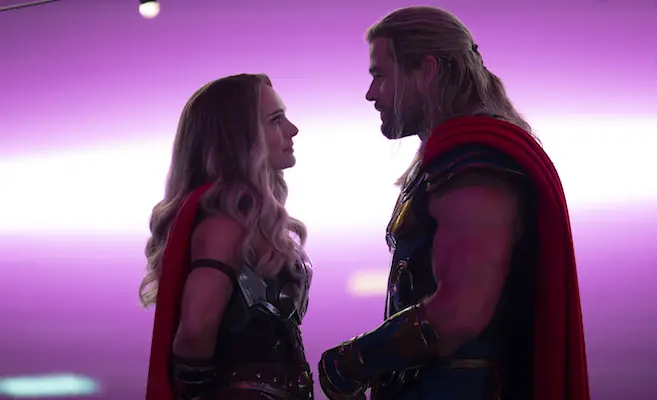 Back in 1987, console video games took a major leap in innovation, one that changed the industry forever. Nintendo released three legendary games, each with the ability to “save” your progress and allow you to come back to the game where you left off.
Back in 1987, console video games took a major leap in innovation, one that changed the industry forever. Nintendo released three legendary games, each with the ability to “save” your progress and allow you to come back to the game where you left off.
One of the games, The Legend of Zelda, had a built-in lithium battery in the cartridge to save your progress. The other two used a crazy collection of letters, numbers, and symbols to mark your progress. One of these games, Metroid (much like the battery powered Zelda) would go on to great success on every Nintendo Game system. The last game in this historic triumvirate, Kid Icarus, never got the love that its brothers received (other than a simplistic GameBoy adventure, which was essentially a remake of the NES game) and seemingly disappeared from the gaming world for 25 years.
Finally, Pit the Angel is back and he’s brought the entire cast of Kid Icarus with him.
Kid Icarus: Uprising is the brainchild of Masahiro Sakurai, the creator of the mega-popular Super Smash Bros. games. Pit, the protagonist of Kid Icarus, was a playable character in the Super Smash Bros. Brawl for the Wii.

When Nintendo first announced the 3DS system in 2010, one of the first top-shelf games that was hinted at was a new Kid Icarus game. The first footage released at E3 that year revealed a different type of game, one that focused on flying and action, and less on side-scrolling and platforming.
As the story goes, Pit the Angel is once again called into service by the Goddess of Light, Pelutena, to battle the evil Medusa, who has returned after 25 years of being away. Medusa brings with her the myriad minions from the first game, including the eggplant wizards (yes, these are actual things) and the Reapers. To battle these baddies, Pit is given the power of flight, but only for five minutes at a time, and a metric ton of weapons to use in his battle.
Uprising features an on-rails flight mode to open each of the 20-plus chapters, then the action switches to a 3rd person action stage. This is pretty much repeated for every chapter.
The beauty of Uprising is in the features, the number of weapons, and the use of hearts and the brilliant Fiend’s Cauldron.
Uprising has a solo mode, which is the main story, and a multiplayer mode, called “together.” There are also different side things to do, all involving collecting treasures, weapons, and skills.

There are over 100 weapons in the game, which can be collected in levels, bought and sold from Pelutena, or created by weapon fusion. In fact, the weapon fusion feature is pretty vast, as each weapon has good and bad components, and the player must decide what bonuses are most important.
Another incredibly unique aspect of Uprising is the Fiend’s Cauldron. Before each chapter, Pit has the option of betting hearts on his chances of completing the level. The higher the wager of hearts, the harder the level AND the better weapon and skill drops will be. You can opt to not wager any hearts, and have an easy game of it, or you can go hardcore and “blow the wad.” Some of the game’s best weapons, powers and items can only be obtained by playing hardcore. This gives Uprising an unprecedented level of replayability.
Graphically, Uprising looks great. The stereoscopic 3D is intense, especially in the flight modes. The action on screen is crazy, and there is some minor lag in levels with a ton of swarming creatures, but for the most part, the graphics are balanced and the action is smooth.
The music is classic Kid Icarus, featuring themes from the original game. The sounds of the game are pretty generic, but the strength (and weakness) of the audio comes from the voice acting.

As a longtime Kid Icarus fan, the banter between Pit and Pelutena (and assorted “guests” that pipe in during the adventure) is fun, but also constant. Sometimes, the conversation is focused on the task at hand, sometimes there are jokes (some inside and pretty funny, some not), but regardless the talking is NON STOP and gets annoying, especially during an intense boss battle.
I’ve even defeated a baddie while Pit and Pelutena were still talking, and the conversation just stops mid-sentence. It is strange, to say the least. And while I’m on the subject, I’m not sure I like the actor voicing Pit, which probably doesn’t help since he talks non-stop.
The story is rife with nods to the original Kid Icarus game. As an example, when coming across an enemy from Kid Icarus, Pelutena will ask Pit if he remembers the monster, including showing an 8-bit rendering taken directly from the original game on the bottom screen. I’ve chuckled quite a few times during my adventure.
There are also inside jokes about other Nintendo games, the time it’s taken for a new Kid Icarus game to be published, and the fact that Pit has no idea why the game is called Kid Icarus. Come to think of it, I can’t either. Regardless, the humor works.

Kid Icarus: Uprising uses a unique control set up. The circle pad is used for movement, the L button is for firing (it can be held down for constant fire, but can also unleash powerful range attacks if you take the time to aim, and melee is handled by tapping L while engaging an enemy up close), and the stylus and the bottom screen is used for aiming and for the aforementioned character banter. The stylus is also used for directional control during the third person action stages of each chapter.
The control scheme is reminiscent of the DS game, Metroid Prime: Hunters. For the most part, Uprising must be held with one hand, as the other hand controls the stylus. The “holding” hand will cram up.
This control set up is not at all comfortable. Because of this, Nintendo has included a nifty stand with each copy of the game to assist the player. While the stand helps, it doesn’t solve the problem entirely. Also, because of the strange way the 3DS must be held to play, the 3D effects are hard to maintain during intense play. I’ve had to adjust the 3D level mid-battle more than a few times.
The controls can be adjusted (and there is a left handed option, including an option for using the Circle Pad Pro attachment) but remapping the buttons does not solve the hand-cramping, 3D-losing problems that are inherent in the game.
Lastly, there is an AR card component to the game. There are 40-plus cards that can be collected from retailers, or at Nintendo-sponsored events. Six cards are randomly inserted with each copy of the game. The AR cards unlock some neat features using the 3DS’s cameras. It is just a gimmick, but it strikes at the heart of the “collector” like myself.
Kid Icarus: Uprising is an incredible game with a decent story that honors the franchise’s past, offers a ton of stuff to do, and comes complete with robust features. The action is intense and beautiful, and the writing in-game is humorous and sometimes hilarious. The experience is a far cry from the original, and that is a good thing for the most part.
With suspect control options, and unavoidable hand cramps, Uprising can also be a painful experience. But if taken in small doses, with plenty of hand-resting breaks, the Kid Icarus: Uprising experience can be amazing. I personally miss the side-scrolling aspects, and the difficulty of the original, but taken for what it is, Uprising is a virtual work of art on the 3DS, and a must-have title.
Shop for Kid Icarus: Uprising for Nintendo 3DS at a discounted price from Amazon.com (March 23, 2012 release date).



